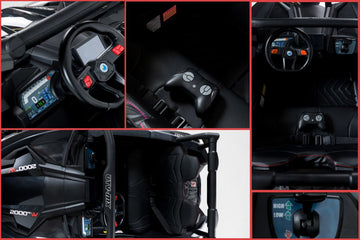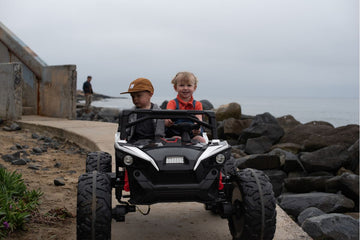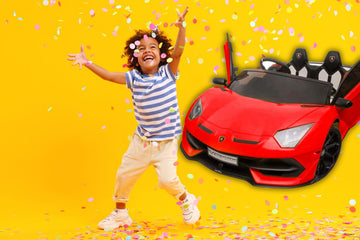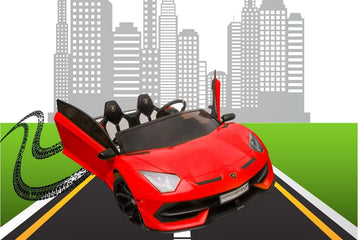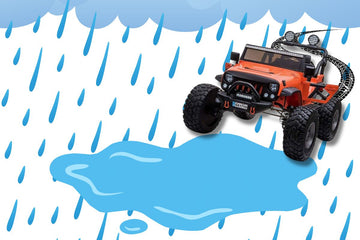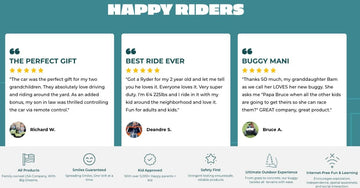What Features Should I Look for in a Ride-on Toy for Safety?
Ride-on toys spark joy, adventure, and imagination for children of all ages—but with all those smiles comes an important consideration for caregivers and parents alike: safety. Whether you’re shopping for a toddler’s first set of wheels or a battery-powered ride-on for bigger kids, knowing what features to prioritize can make all the difference between endless fun and potential hazards.
If you’re wondering how to choose the safest remote-control kid ride-on toy cars or power wheels for your child, keep reading! This guide will walk you through the most critical safety features and considerations to keep little adventurers rolling with confidence and security.
Stability and Design
A solid design is the foundation of a safe ride-on toy. Stability should be at the top of your checklist to ensure the toy stays upright and balanced during use.
Look for these key design features:
- Wide Base: A ride-on toy with a wide base is less likely to tip over, especially during sharp turns.
- Low Center of Gravity: The lower the ride-on sits, the more stable it will be. Elevated designs can make tipping easier, especially for toddlers still developing their coordination.
- Sturdy Construction: Check for reinforced wheels and chassis. Low-quality materials are more prone to wear and tear, which could potentially cause accidents.
Pro Tip: Test the toy for wobbles before purchasing or assembling it. If it feels shaky, it’s better to consider other options.
Material Quality
What’s a ride-on toy without quality materials? Durable, safe, and non-toxic materials should define your choice. After all, kids love exploring, and their toys need to keep up!
Features to prioritize:
- Non-Toxic Materials: Young children explore with their hands (and mouths), making non-toxic plastic and paints essential. Look for certifications verifying that the materials meet child safety standards.
- Smooth Edges: Check for sharp edges or corner points. While your kids zoom around, you want to ensure they won’t accidentally scrape or hurt themselves.
- Weather-Resistant Durability: For battery-powered or remote-control power wheels meant for outdoor adventures, choose materials designed to withstand exposure to the elements.
Why it matters: Quality materials not only last longer but also reduce risks of skin irritation, choking, or cuts.
Age Appropriateness
Every age and developmental stage requires a different level of functionality and safety. Choosing a ride-on toy suited to your child’s size and abilities ensures a safer and more enjoyable experience.
What to consider:
- Size Matters: Ensure the toy is proportionate to the child’s height and weight. Most toys include maximum weight capacities on their packaging.
- Complexity: For toddlers, stick to simple foot-push ride-ons with minimal features. For older kids, remote-control kid ride-on toy cars or remote-control power wheels might be better suited.
- Speed Settings: Younger drivers need slower models with limited speed options to keep them safe while learning to maneuver.
Pro Tip: Always double-check the manufacturer’s recommended age range to match the toy to your child’s physical and cognitive development.
Safety Features
The right safety features can help prevent accidents and give parents peace of mind during every ride.
Must-have safety features:
- Safety Belts: Look for seat belts in powered ride-on toys to keep children secure in their seats while driving.
- Speed Control Settings: Many remote-control power wheels allow parents to adjust or cap the speed to prevent reckless play.
- Braking Systems: Reliable brakes are essential in motorized ride-ons to ensure children can quickly and safely stop.
- Parental Control: For advanced ride-on toys, especially remote-control kid ride-on toy cars, parental controls can allow caregivers to monitor and intervene with vehicle operation as needed.
Why it matters: These features help prevent common safety risks, such as unintended acceleration, tipping, or falls, ensuring kids have fun without unnecessary worry.
Supervision
No safety feature can replace active adult supervision. Whether your little one is pushing themselves along on a foot-powered ride-on or zipping across the yard in a remote-control ride-on car, it’s crucial to keep an eye on the action.
Tips for safe supervision:
- Set Boundaries: Designate safe play zones where kids can ride. Avoid roads, slopes, or areas with obstacles like pools or sharp objects.
- Outdoor Use: Make sure kids wear proper gear like helmets during outdoor play.
- Remote Control: Utilize the remote control function in powered ride-ons to maintain control of the vehicle’s direction and speed, especially for younger drivers.
- Group Play: If multiple kids are playing at once, thoughtfully plan turns to avoid collisions or conflicts.
Remember: Being proactive and present during play keeps the fun going while reducing the chance of accidents.
Wrapping Up Safety with Fun
The joy on your child’s face as they take their first ride is priceless—but ensuring that joy is matched with safety and security? That’s invaluable. From stable designs and high-quality materials to safety belts and parental controls, what you choose today can positively shape your little adventurer’s playtime for years to come.
Looking for the ultimate ride-on toy? Browse our collection of premium remote-control kid ride-on toy cars and remote-control power wheels, each designed with family-first safety and adventure in mind.
Give your kids the gift of safe adventures. Shop our range of ride-on toys!
